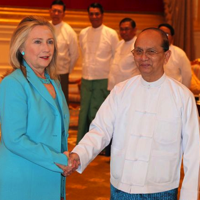Over the past several months, the rapid changes in Myanmar have underlined the remarkable political skill of the government that came to power after the country’s 2010 elections. With its initial steps toward embracing a domestic reform process, the Myanmarese leadership has obtained approval from the other nine Association of South East Asian Nations members to chair the regional bloc in 2014. The domestic opening has also allowed Myanmar to forge economic and political relationships with other Asian countries such as Japan, India and South Korea. Perhaps most importantly, the dramatic thaw in relations with the U.S. has encouraged greater Western engagement, providing Myanmar with a much-needed alternative to balance China’s presence in the country.
This is all as Myanmarese President Thein Sein expected. Already in mid-January, in his first interview with foreign media, Sein declared that Myanmar had fulfilled the “requirements that Western countries would like to see.” These included measures that paved the way for Aung San Suu Kyi and the National League for Democracy to participate in upcoming parliamentary by-elections, the release of political prisoners, guarantees of broader civil liberties and preliminary cease-fire talks with some ethnic minority groups. Sein insisted the reforms were driven not by the desire to see Western sanctions lifted, but because they were necessary for the country. Nonetheless, his formulation strongly suggested that further progress over the coming year will be subject to a quid pro quo policy, especially with regard to Washington.
For their part, despite lingering reservations, Western governments have been scrambling to adapt their policies to the rapid pace of change in Myanmar. The U.S. responded to the initial reforms by promising to “meet action with action,” in the words of U.S. Secretary of State Hillary Clinton. Following her visit to Myanmar last December, the United States Agency for International Development (USAID) launched new development programs in the country, including a microfinance project in central Myanmar. In 2012, USAID plans to invest $35.1 million in development programs, including along the Thai border, according to the State Department and USAID Congressional Budget Justification report. Moreover, the U.S. announced plans to exchange ambassadors along with its decision to lift its opposition to international financial institutions -- such as the World Bank, the Asian Development Bank and the International Monetary Fund -- playing a greater role in the country, including providing assessments and limited technical assistance.

